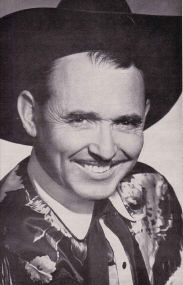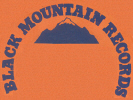Les was one of the first to visualize the challenges of Square Dancing, he surprised the Square Dance world by combining the basics, a forerunner of much of the sight calling and position dancing of today. As an author of many texts on calling, Les became a model for countless young callers coming into the activity.
His manual "Les Gotcher On Sight Calling" captures the fundamentals that every caller should know.
SIO's article: FEW CONTEMPORARY CALLERS have left their mark so indelibly engraved in the shaping of
today's square dance picture than the latest caller to be inducted into the Hall of
Fame. Les Gotcher, who today lives in Zephyrhills, Florida, where he presently calls
for three beginner classes, had his baptism in square dance calling in 1916 at the tender
age of eleven, for which he received the princely sum of twenty-five cents. As one of
the nation's most colorful callers, Les moved to Hollywood from South Central Texas
and became associated with the motion picture industry, calling for a number of
Hollywood films including "Night Train to Memphis" with Roy Acuff in 1939, followed
closely by "Square Dance Jubilee," then two of the John Wayne classics, and "Copper
Canyon," "House by the River," "East Side West Side," "The Duchess of Idaho," and
others. In addition, Les conducted regular club dances at the famed Beverly Hills
Hotel which attracted such movie greats as Andy Devine, Ronald Coleman, Lloyd
Nolan and Caesar Romero.
One of the first to visualize the possibilities of the many challenges of square
dancing, Les "surprised" the square dance world by combining the basics or "hashing
the breaks," a forerunner of much of the sight calling and position dancing of today.
His innovations soon received nationwide attention and Les became one of the
foremost traveling callers in North America. Few callers today have a record that can
surpass Gotcher's miles-traveled-per-year in doing one-night stands, callers' clinics
and workshops. As originator and editor of an internationally circulated magazine,
"Squares 'n Rounds," and as author of many texts on calling, including "The American
Square Dance," "Callers' and Teachers' Manual," "Hashin' the Breaks" and others,
Les became a model for countless young callers coming into the activity. Among the
first to record, Les' records on Capital and MacGregor labels are still models of
excellence. His own Black Mountain label poured many dozens of patter call discs into
the activity during the 1950s and 60s.
Now retired and devoting his time to fishing and teaching, Les and his wife, Winnie,
who recently celebrated their 53rd wedding anniversary, look back on many happy
years devoted to square dancing. It is because of his tireless energies and his many
contributions to this activity that we join with square dancers around the world in
saluting Les Gotcher, an honored member of the Square Dance Hall of Fame.



